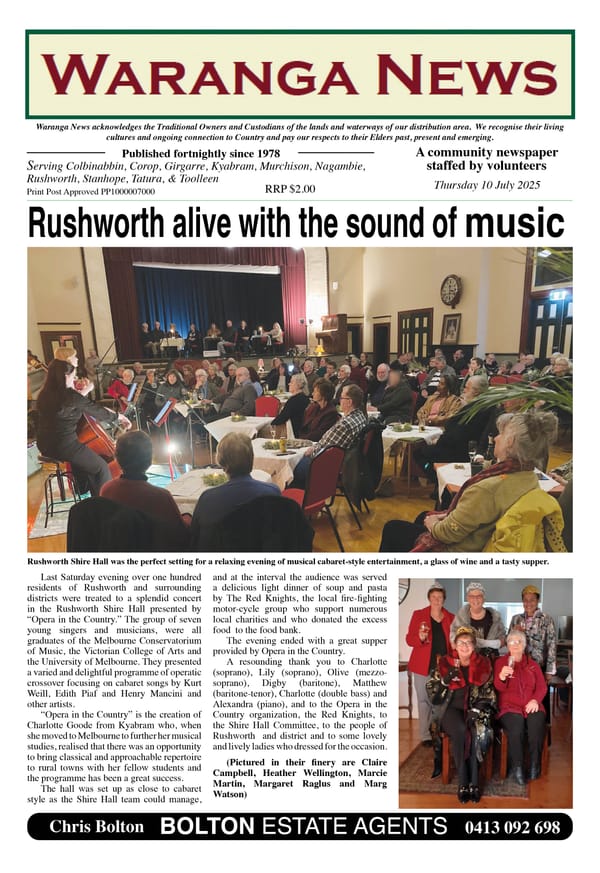1. Introduction

This series of stories examines aspects of the lives of the Aboriginal people who formerly lived in the Waranga area. The kernel of the idea for the series comes from a brief article which appeared in the “Rushworth Chronicle” and “Murchison Advertiser” in 1917, viz -
“King Billy, an old aboriginal who was born in the main street of Rushworth 62 years ago, paid a visit to his native place during the week. The old fellow is suffering from double cataract of the eyes, and is almost blind. He claims to be the last of the Rushworth tribe of aborigines.”1 No further information was proffered in subsequent papers.
The article raises all sorts of questions about this man, and the lives of the Aboriginal people of the area, both before and after European colonisation. Waranga Dreaming tries to answer some of those questions, hopefully in a largely non-political way that builds general knowledge, understanding and an increased capacity for reconciliation.
WHAT’S IN A NAME?
The title for these articles was deliberately chosen for a number of reasons. Firstly, Waranga refers to the geographic area that will be the focus of much of the content – the former Shire of Waranga. It will centre around Rushworth, which is fairly central to the country of the Ngurai-illum Wurrung people.
Secondly, Waranga (or “warranga”) is reputedly an aboriginal word meaning “sing”. Aboriginal ‘songlines’ are an important concept in oral history. David Wroth defines songlines as “one of the many aspects of Aboriginal culture that artists draw on for inspiration. They are the long Creation story lines that cross the country and put all geographical and sacred sites into place in Aboriginal culture. For Aboriginal contemporary artists they are both inspiration and important cultural knowledge.”2
Finally, ‘The Dreaming’ is a concept that most people understand. It is a time when stories of Creation emerged, linked to places, flora, fauna and people. The stories were then passed on in an oral tradition. And, this series of stories will require some dreaming, to imagine the Waranga area before and during colonisation.
LAST OF THE RUSHWORTH TRIBE?
The article in the local papers in 1917 needs some clarification. There was no such thing as a “Rushworth tribe”. What the author of the article was referring to was Aboriginal people who frequented what later became known as the Rushworth area i.e. the Ngurai-illum Wurrung people. Much more about them will appear in later stories.
King Billy would not have been the old gentleman’s birth name, but one bestowed by the European inhabitants. Aboriginal people do not, and did not, have kings, but Elders. If he was indeed 62 in 1917, that places his year of birth around 1855. Imagine Rushworth at the time, radically changed by the influx of thousands of gold seekers from 1853. There are recorded stories of Aboriginal people camping at what is now the centre of town, at the north end of High Street. The European centre of town was then up the hill, south of Murchison and Nine Mile Roads.
The quoted claim suggests that he was “the last” of the Aboriginal people from his “tribe”. Attending a recent seminar on history writing, it was suggested that one should be wary of stating absolutes e.g. the biggest, the oldest, the first, the last. Nevertheless, what a story this man would have been able to tell.
References: 1 Murchison Advertiser 13.7.1917; 2 Wroth, David, Article in Japingka Aboriginal Art, “Why Songlines are Important in Aboriginal Art” 2015




